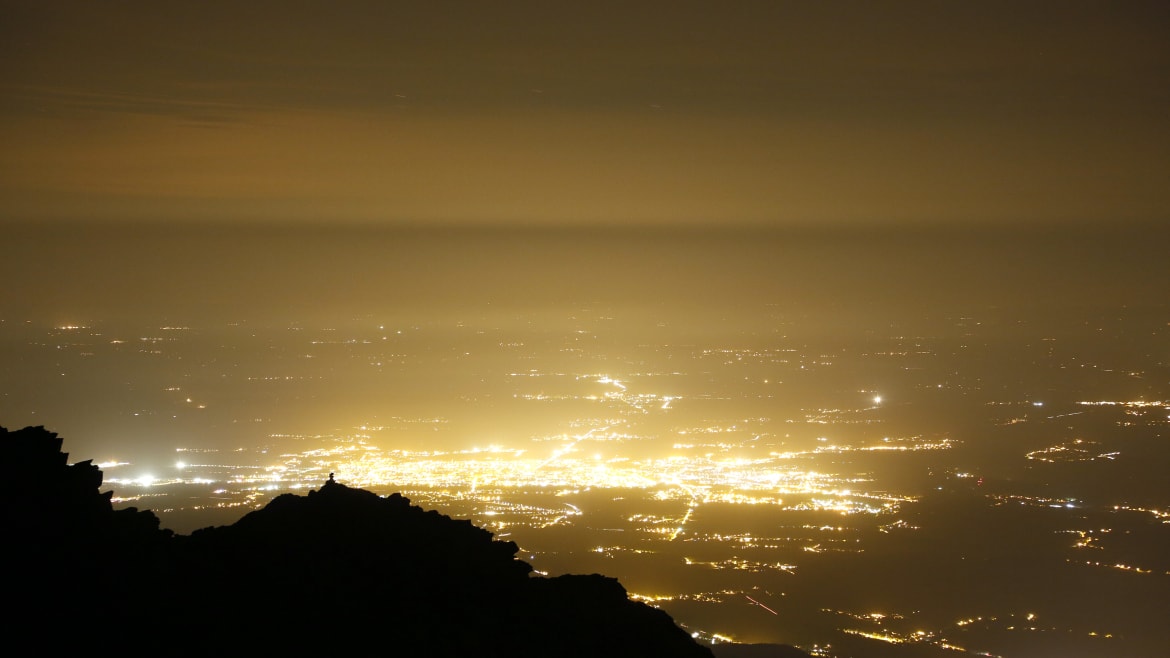Christophe Lehenaff / Getty
Since the industrial age began, light pollution has slowly transformed the night sky into a brighter scene that increasingly obscures our view of the stars, constellations, and other planets. Artificial lighting emanating from streetlamps, lit up buildings, dazzling advertisements, and a host of other sources can all cause an excess of luminescence that lingers into the night and produces what scientists call “skyglow.” Nearly a third of the world—including 80 percent of Americans—is unable to properly see the massive glowing arc of the Milky Way galaxy due to skyglow. None of this is new, but it’s happening at an astonishingly faster rate that we thought possible.
A new study run by an international team of researchers has found that light pollution is causing sky brightness to increase about 7 to 10 percent every year—faster than the 2 percent per year increase that satellite measurements have originally suggested. The average human who could see about 250 stars in the night sky today will probably only see about 100 stars in less than two decades.
The findings, published Jan. 19 in Science, were pulled together from an analysis of data from Globe at Night: a collection of 51,351 naked-eye observations made by citizen scientists scattered in 19,262 locations around the world, from 2011 to 2022. North America’s increase in skyglow seems to be the worst among the world’s continents, ticking up by roughly 10.4 percent every year.

